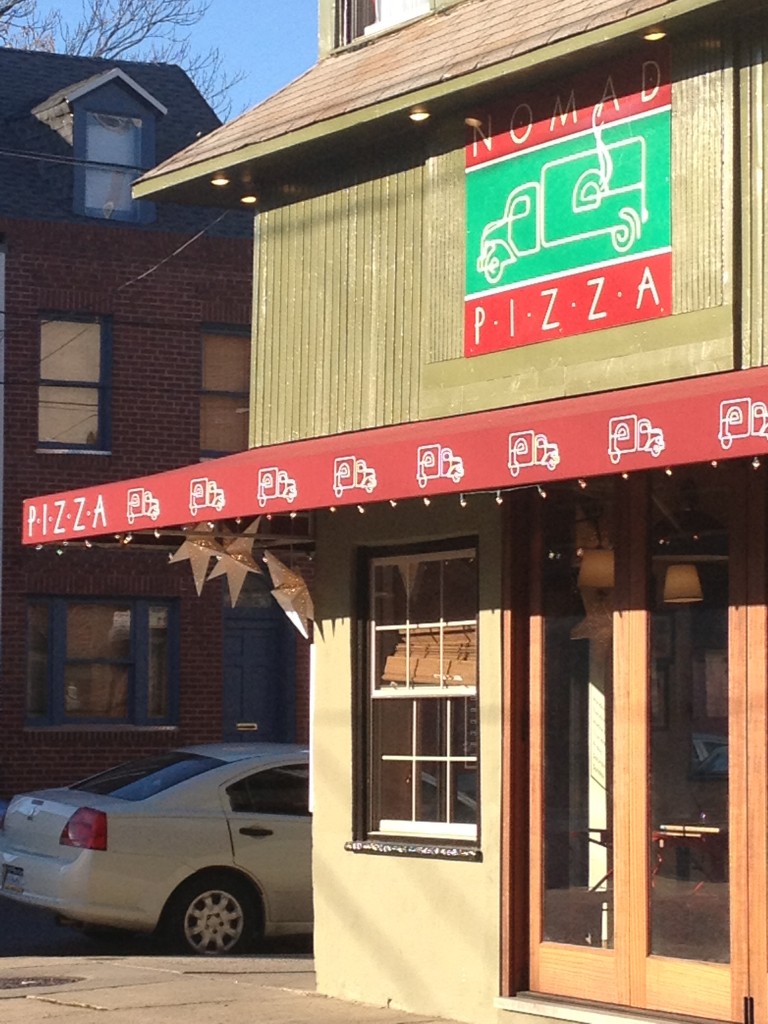Tips from James Oley, the Keystone Pizza Critic

I’ve loved pizza for as long as I can remember; who doesn’t, right? My love affair started with the usual reasons; pizza is good, it’s cheap, easy, fast, and so on. After years of being a passive fan I developed a ‘I’d like to own a pizza shop someday’ dream, and recently that dream has been on the forefront of my mind daily. It’s almost debilitating; my passion for the art and industry seems to grow with each slice I eat. I needed an outlet; a way to talk about pizza all the time, learn about pizza, learn to make pizza, and stay abreast with the industry. Without knowing how to review pizza, I took the first step. Enter blogging.
.
Basic Ingredients
I decided that I was going to eat pizza from as many places as I could and review my experiences on a blog. I had no experience with being a pizza critic, or blogging, but because I enjoy the subject matter as much as I do, it didn’t take me long to start figuring things out. There are a lot of people out there who review pizza, and they each have their own style in regard to offering their reviews. I think some of the basics on how to review pizza include concentrating on (1) the information you provide, (2) how you present your information, (3) visual stimuli, and (4) engagement.
Nomad Pizza – One of James’ Faves

Providing the Pizza Facts
The information you provide within your review should be thorough. It isn’t enough to say that you went to ABC Pizza Shop, liked their pizza and give them a rating. Everyone’s tastes and likes / dislikes are different, so you need to be thorough in your evaluation. When I’m eating a pizza I try to describe the cheese (what kind it is, how much there was on the pizza, was it burnt, etc.). I do the same for the sauce and crust (was the sauce sweet, zesty, contain herbs; the sauce to cheese ratio; was the crust crispy, soft, bubbly, sag too much at the tip, etc.). There are a plethora of items to consider (was the pizza NY style, Sicilian, greasy, cold, and so on). Other than the pizza, you could also give information pertaining to the establishment’s atmosphere, décor, service, payment methods, whether or not they deliver, convenience of parking… As I said, there is a ton of information you could include, you just have to find the sweet spot where you provide as much information as you can while ensuring your review isn’t too long or short.
How to Present the Facts
A lot of the information given within pizza reviews is the same among all reviewers. What sets reviewers apart from each other is how they present their information. Each person must find their own style. Some people tie in personal information, some use a lingo that speaks to a younger crowd, and some tell a story while others simply list their findings. I suggest you determine how you will handle negative reviews. Will you slam the establishment for a negative experience, or let the truth be known in a more respectable manner? This is one factor I was caught off guard with when I started, and I ended up editing a blog post after it was published and read by the establishment whose pizza I reviewed. Although it’s simple, there is a lot to learn on how to review pizza correctly, tact is necessary.
Taking Pictures
 On visual stimuli… This might be the easiest part. People love pictures. You don’t want a dozen pictures of the same thing, from the same angle, or of something mundane. When I take pictures I always take a lot more than I need because not all of them will turn out good. I usually try to get shots of the front of the establishment, the inside, the whole pizza or slice, the tip sag or lack of, and ones that concentrate on the cheese, sauce, and crust, including the underneath. What I end up using within my review depends on the information presented. Pictures are important; they can make people hungry or prevent them from patronizing a particular establishment. They’re also first impressions.
On visual stimuli… This might be the easiest part. People love pictures. You don’t want a dozen pictures of the same thing, from the same angle, or of something mundane. When I take pictures I always take a lot more than I need because not all of them will turn out good. I usually try to get shots of the front of the establishment, the inside, the whole pizza or slice, the tip sag or lack of, and ones that concentrate on the cheese, sauce, and crust, including the underneath. What I end up using within my review depends on the information presented. Pictures are important; they can make people hungry or prevent them from patronizing a particular establishment. They’re also first impressions.
Tell the World
I mentioned pictures being first impressions because when you post your review to various social media sites the first thing people will often see is one of your pictures associated with your review. If you aren’t social media savvy I suggest you immerse yourself into that world without delay. Social media is important, because without it, your viewership will likely consist of some family and friends. After I post a review to my blog I then disseminate it onto the interwebz via Facebook, Twitter, Pinterest, and even Linkedin. Those four social outlets are just a few of many available. By engaging others through these social sites you will find your thirst for knowledge being funneled to many online resources you may not have found otherwise, including possible opportunities to interact with experts in your field of interest. My experiences with using Facebook and Twitter have led me to having experts help me fine tune my pizza recipe, equipment suggestions, and so much more. Remember, being social is a two-way street; find a penny – give a penny, need a penny – take a penny!
So there you have it; my thoughts on reviewing pizza. It isn’t rocket science; it’s just a matter of following some basic guidelines and finding your way. If you have the passion, the journey will be your reward. That, and eating lots of pizza!
.
[social-bio]
.
James, For years i held the broad notion that the chains were lousy, but the mom-n-pop shops made “real” pizza. But over time, decades of eating pizza, I found that I was getting the same soft-crust, over-cheesed and under-cooked pies at every storefront place. If the crust has no character, what are the chances that the pizza shop owners are making their own dough? I’ve discovered that there is an entire industry devoted to supplying the independent pizza shop. Sauce, dough, cheese, napkins, boxes, even menu printing are outsourced, and it makes for some pretty homogenous pizza products. THIS is very enlightening: http://www.syscocentralpa.com/ordereze/Files/Sysco_Italian_Book.pdf and it may help explain why there are so many soft, wet, floppy pizza crusts — competing on price, pizza makers choose the cheapest, low-gluten pizza flour from Sysco. Pie makers looking for shortcuts can buy pre-fab crusts, too. That’s why, typically, “fresh” pizza is not as good as DiGiorno!
Hey Marty,
Thanks for the kind words. I think it’s safe to assume that just because someone has a lacking crust doesn’t necessarily mean that the dough was mass produced, and this is my main weakness; I’m still working on being able to discern between dough sourced from suppliers and the real McCoys. Are there any tell-tale signs, or is it something learned through experience?
Good thoughtful article! When I started pizza blogging, I focused my pics solely on the pie. A friend praised one review, however,that included an interior shot and an exterior shot of the pizzeria – so now I try to do that every time. For ingredients, I try to determine if the pizzaiolo is a craftsman making the dough from scratch, or a cost cutter buying mass-produced stuff from Sysco. Always, I focus on the crust – the foundation and the soul of pizza.